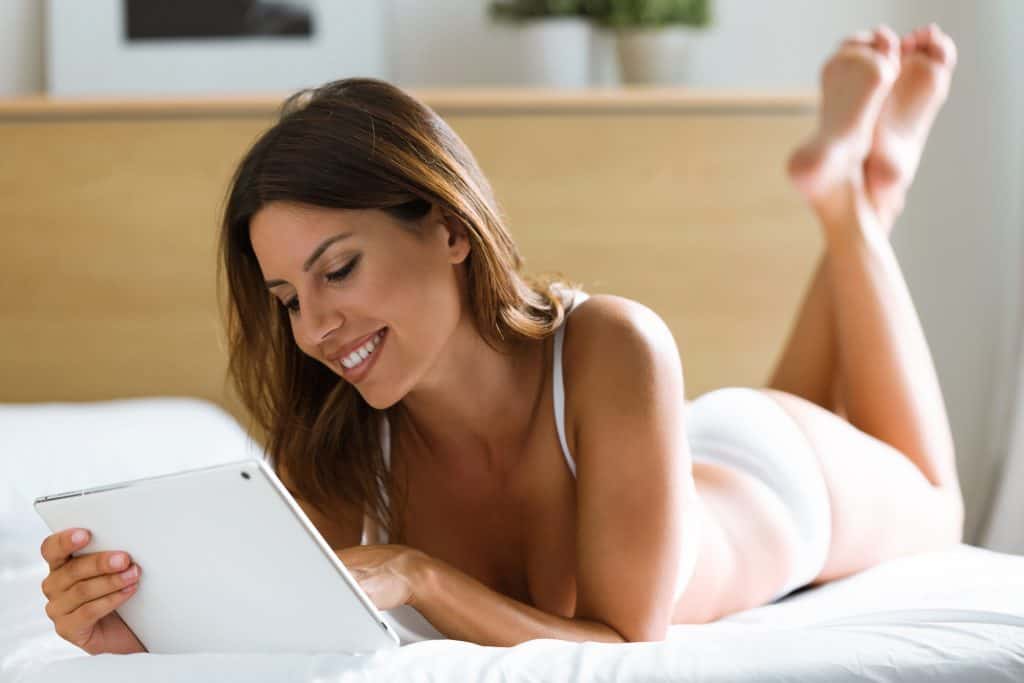If you have purchased a tablet or smartphone recently, you may have noticed that the mobile technology landscape changes and evolves rapidly. So rapidly in fact that it can be daunting to try and figure out what thing to buy to suit your needs. This can be particularly frustrating if you are looking at tablets. There are Android tablets, iPads, the Microsoft Surface, and e-readers.
At first glance, you notice that most tablets are full-color devices with apps and tons of functionality for games, productivity, reading and more. Then you notice that e-readers are black and white devices with low-performance specs, relatively small storage chips, no camera, no apps, low refresh rates and they're black and white. They're also generally inexpensive when compared to something like an iPad.
So why would you ever choose an e-reader over a tablet? Well, there are actually quite a few reasons that you might want to buy an e-reader. If you own a tablet, you have probably noticed that the battery life lasts a day or two. If you like to read, it can be inconvenient if you aren't around a wall outlet all the time. So what else does an e-reader bring to the table?
Related: What Do the Best Essay Writers Say About E-book Readers?
Battery life:
Regardless of what device you are using, battery life is important. There's definitely nothing worse than being in the middle of a task and getting the dreaded low battery notification. It's even worse if you aren't near an outlet and you have to stop whatever you are doing to prevent your device from dying.

E-reader
E-readers are simple devices. While at first glance, this may seem like a disadvantage, e-readers definitely do their job well. See e-readers were never meant to do everything. E-reader manufacturers like Amazon and Kobohave one goal in mind when making e-readers. Reading. Everything that e-readers are capable of all exists to improve the reading experience.
Like we mentioned, battery life is incredibly important no matter what you are doing. This is doubly true with e-readers. Imagine buying a device that only does one thing and also has bad battery life. There would be no reason to purchase it because you can get something that does more and has similar battery performance.
Enter the humble e-reader. Amazon must have considered this when they launched the Kindle e-reader into the spotlight. It may not have seemed at first like it was a device worth owning, yet avid readers flocked to it. The Kindle and pretty much every modern e-reader have batteries that last for weeks on end. This is great because you can toss it into your bag or leave it by your favorite reading chair without worrying that you will come back to it for a reading session and find that the battery died.
Tablet
Tablet batteries, while improving every year, can't hold a candle to an e-reader. While e-readers grant users weeks of battery, tablets manage mere hours or days at best. So why is this? Well, tablets have much beefier hardware, and they also do a lot more. Tablets like the iPad or an Android tablet designed to run multiple apps at the same time. They have bright, full-color screens that are made to play games and consume media.
Windows tablets like the Microsoft Surface take performance a step further by running full Windows programs. You can run the full Microsoft Office suite. You can play full PC games and more. This means that you will never get the battery life that you see on an e-reader.
Comfort:
Comfort is really important when you are reading for a half hour or more. It's essential to have a device that is light, small and easy to hold for a long time.
E-reader
When it comes to reading, e-readers are specially designed to be around the size of a paperback book, and usually lighter. This is because many readers like to hold their devices with one hand while they are reading. Some devices like the Kindle Oasistake this a step farther with asymmetrical designs and page turn buttons that are specifically designed for one-handed use.
E-readers have screens that are between 6 and 7 inches, 8 at the most. They also are made of plastic in most cases and don't have a lot of hardware under the hood. This means that no matter how you hold your e-reader, it will never be super heavy or cumbersome to hold.
Tablet
Tablets are usually designed with performance and size as a focus. Devices like the iPad are over 9" and have a lot of hardware that makes them heavier and impossible to hold with one hand for over half an hour, especially in the same position.
Devices like the Microsoft Surface are even heavier because they have to be able to satisfy a PC user's needs. The surface is even thicker than your average tablet and larger as well, meaning that any kind of one-handed reading is pretty much out of the question. The kickstand on the surface is even more proof that it is designed to be set up like a laptop and used on a flat surface if used for long periods of time.
Functionality:
Both tablets and e-readers are designed to accomplish various functions. What you want your device to do will heavily influence exactly what device you need to purchase. For example, if you want to do document edition, an e-reader isn't for you.
E-reader
E-readers are simple devices. They're designed with pretty much one function in mind and that's reading books. From camping to road trips to plane travel or just at lounging around the house. E-readers are designed to provide you with hours of comfortable reading at a time.
One of my favorite e-reader features is the E-ink screen. It's the brilliant display that is the driving force behind the battery life of modern e-readers as well as the feature that makes it easy to read for hours. E-readers like the Kindle Paperwhite or the Kobo Clara HD use edge lighting to produce a soft glow that doesn't hurt your eyes, and the screen itself uses a technology that makes your device seem like you are reading an actual piece of paper rather than an actual screen.
If you love reading but you are finding that your eyes hurt after a period of time then an e-reader might be exactly what you need.
Tablet

Tablets are packed with features. If you want an all in one device that will allow you to play games, read books, do light editing and more than a tablet is likely for you.
With a tablet, you have access to an app store. If it's an iPad you will be using the Apple App Store and with an Android device, you will be using the Google Play Store. Regardless of which store you are using, you will be flooded with options. You will have access to the latest games as well as the mobile versions of Microsoft Office or Google Docs.
If you are the kind of person that has ebooks with multiple companies (Kobo, Kindle or Nook), you will probably get more use out of a tablet as you can have all of those on one device as opposed to having 3 different e-readers for each bookstore.
Hardware:
When you hear news about new devices, hardware is always part of the conversation. Hardware includes everything from the display to the processor, storage, RAM, camera and more. Hardware talking points will be different depending on whether you are talking about an e-reader or a tablet.
E-reader
Processors, RAM, and storage aren't as big of a deal for an e-reader as they are for a traditional tablet. E-readers are much more simple devices, so you will hear a lot more about things that affect the reading experience.
When it comes to e-reader hardware you will hear a lot more about the ppi (pixels per inch) of the display, water resistance, screen size than anything else. For example, there are only a few devices like the Kindle Oasisand the Kobo Aura H2Othat have water resistance. Water resistance is handy if you are the kind of person that likes to read in the bathtub or by the pool or lazing around in a hot tub.
Pixels per inch is important because it has to do with the clarity of the text. 300 ppi is standard these days but in some cases, you will find devices that have fewer pixels per inch. For most people, this isn't a big deal, but if you have sensitive eyes it can be.
With e-readers, you have to gauge what the most important features for you are, for example, I am a person that likes to take my devices everywhere, especially in the water. So for me, a device with a well-rounded hardware selection is best.
Tablet
Tablets are designed to handle a lot more than e-readers so hardware like RAM and storage upwards of 64GB is often very important. If you are the kind of person that uses one device for everything, a tablet with a good amount of storage and a good processor with 3GB or more of ram are important.
One consideration to make when it comes to tablet hardware is that the better your tablet, the more expensive it will be. The most expensive iPad model can cost over $1000. The most expensive version of the Kindle Oasisis under ~$400.
Software:
Software between e-readers and tablets are dramatically different. Since they are both geared toward different uses, their functionality between tablets and e-readers do different things as well.
E-reader
You know by now that e-readers are all about books and reading. Their software echoes that. Kindle devices have software that allows you to look up words while you are reading, highlighting functionality and more features that are related to improving your reading experience.
Kobo deviceshave features like pocket built in that allow you to save articles from the web to read later at your leisure. Some Kobo devices also have OverDrive which allows you to read library books from participating libraries.
Tablet
Tablets include much more software than e-readers. They support all of the same software features that e-readers do but also support editing software, camera software for picture taking and editing, flashlight software so that you can use your camera's flash to see in the dark. Basically, their software sticks with the theme that you can do almost anything with your tablet, at the cost of battery.
Conclusion
Tablets and e-readers are both really good, but which one should you pick? Well, it really depends on how you want to use it. If you want a device with stellar battery that you can read on comfortably for hours at a time, get an e-reader. If you want a device that does it all but has a battery that lasts a day or so get a tablet.
It's not even a bad option to have both. The standard Kindle is under ~$100 and will leave some wiggle room for some people to get a decent tablet like the Kindle Fire as well. There really is no wrong answer as long as you have what you want to do with it in mind.
Now it's your turn. What device do you have? Do you prefer e-readers or tablets, or do you have one of each? If you are in the market for a new device and didn't know which to get, did this help you out? Let us know in the comments?
Recommended Links:












